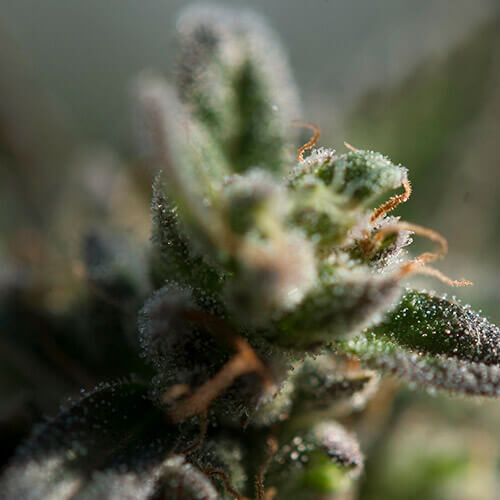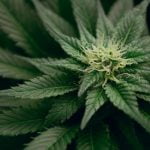Cannabidiol (CBD) is one of the most active and therapeutic cannabinoids found in cannabis and industrial hemp. It’s tough to know where to begin and how to measure the effectiveness of CBD on your body if you haven’t tried it, so a great way for new users to begin a healthy CBD regiment is by microdosing.
What is Microdosing?
Microdosing CBD is a technique that involves taking very small amounts of cannabidiol on a regular schedule. If you’re new to CBD, then microdosing is a great way to better understand the effects of CBD on your body and we suggest trying a microdosing schedule before beginning a full CBD regiment. This helps you find a sweet-spot dose that works best for your body. Microdosing is also great for people experienced with CBD that want to reset their system and get back into their optimal therapeutic range, as we can develop a tolerance over time.
Is Microdosing a Long term Solution?
It’s important to note that microdosing isn’t always the most effective way to ingest CBD products to gain the full therapeutic effects, but it can be! It’s a great way to discover your right amount of measurable cannabidiol dosage over the course of a couple of days. After you’ve found the amount that works for you, then you can begin to take that amount once or twice per day, and continue increasing as needed.

Microdosing with CBD Tinctures
CBD tinctures are typically packaged in 15-mL or 30-mL bottles and each bottle varies in terms of concentration and effects, ranging in CBD concentration from 100mg to 5000mg per bottle.
*First thing to note, there are TWO measurements happening: the liquid ML measurement of the oil, and the MG measurement of the CBD concentration within that liquid.
The key to understanding tincture dosing is noting the serving size, which is typically 1ml of oil, or one full dropper. However, many times it is .25ml or .5ml (a quarter or half of the dropper) so it’s important to read the labels! (If you’re new to CBD and are overwhelmed already, chat with our Budtenders about finding a low concentrated product to start with.)
To find the strength per serving, divide the total mg-strength of a bottle by the total number of servings. A 1000mg strength tincture in a 30-mL bottle features 30 1-mL servings of roughly 33.3mg of CBD. Luckily, most tincture droppers feature dosage measurements that make it easy for the consumer to take the right amount so just make sure to read your labels.
To microdose a tincture, it’s important to find out how many drops are in one mL of oil to determine the strength of each drop. As an example, if your dropper has 24 drops in a 1 mL serving, and each dropper full is 33mg of CBD, then one drop comes out to just about 1.4mg of CBD per drop. So, instead of taking one full dropper of 33mg of CBD at one time, instead, you ingest 2mg of CBD every hour or two to gradually feel the effects and find out the right amount for your body.
*For beginners, we suggest starting with a dose of < 5mg-10mg of CBD. You may notice subtle drowsiness and muscle relaxation. Pay attention to your body and your mind. The more you ingest, the more sleepy you may feel, so make sure to not operate a vehicle or heavy machinery.
MICRODOSING CBD EDIBLES
Tinctures are just one method for consuming CBD. They are a great place to start because you can tailor the dose to your personal needs. However, there are many other low-dose products on the market such as mints, capsules, tablets, and even delicious treats like chocolates and gummies! Chat with our team to learn what’s best for you and the issue you are treating.
Create a Microdosing Schedule
Below is an example of how to begin your new microdosing schedule, but remember that every body is different, so listen to your body and intuition when working with the plant.
When it comes to CBD tinctures, begin with one micro-serving of CBD in hour one. After one hour has passed, take two drops of CBD oil. After the second hour has passed, take three drops of CBD oil. Continue this process until you can begin to feel the effects of your CBD oil. After you’ve found your sweet spot, add up the totals to discover the right measurement of CBD oil that works for your body.
8 am – 1 drop of CBD oil
9 am – 2 drops of CBD oil
10 am – 3 drops of CBD oil
11 am – 4 drops of CBD oil
12 pm – 5 drop of CBD oil.
After one morning of microdosing, you’ll have taken just over one half of a full dropper of CBD tincture. If you don’t feel any therapeutic effects, then continue to add drops to your schedule every hour until you’ve established the therapeutic range that works for you.
Build a Microdosing Journal
Before you begin your new microdosing regiment, it’s important to outline a schedule and give yourself a chance to take notes on how you feel after each drop of CBD oil. After you take each microdose, answer these questions in a simple notebook:

1 – What is my pain level on a scale of 1-10?
2 – How comfortable and calm am I?
3 – Am I feeling better than before I began microdosing?
4 – Is it easy to breathe?
5 – On a scale of 1 – 10, how relaxed do I feel?
By answering these questions at different dosage intervals, you can begin to track your progress and identify the therapeutic range of CBD dosage that works for you.
Find CBD Products at Mission Cannabis Club
MCC has a wide variety of CBD products that are perfect for CBD enthusiasts of all experience levels. Checkout our menu to learn about our CBD edibles, oils, vape cartridges and other CBD goods to find the right product that works for you.
We invite you to visit us at Mission Cannabis Club and talk to our budtenders about CBD and how they’ve incorporated it into their own lives. Our team of cannabis and CBD experts have ample first-hand knowledge about all of our products and can guide you to make an informed purchase that works for your body and lifestyle.
Consult Your Doctor Before Beginning a New CBD Regimen
If you’re new to using CBD, it’s always best to consult your physician before beginning a new regiment. They will be able to tell you more about the specific effects of CBD and help you figure out a dosage range that works for you.
FOOD AND DRUG ADMINISTRATION (FDA) DISCLOSURE
These statements have not been evaluated by the FDA and are not intended to diagnose, treat, or cure any disease. Always check with your physician before starting a new dietary supplement program.











